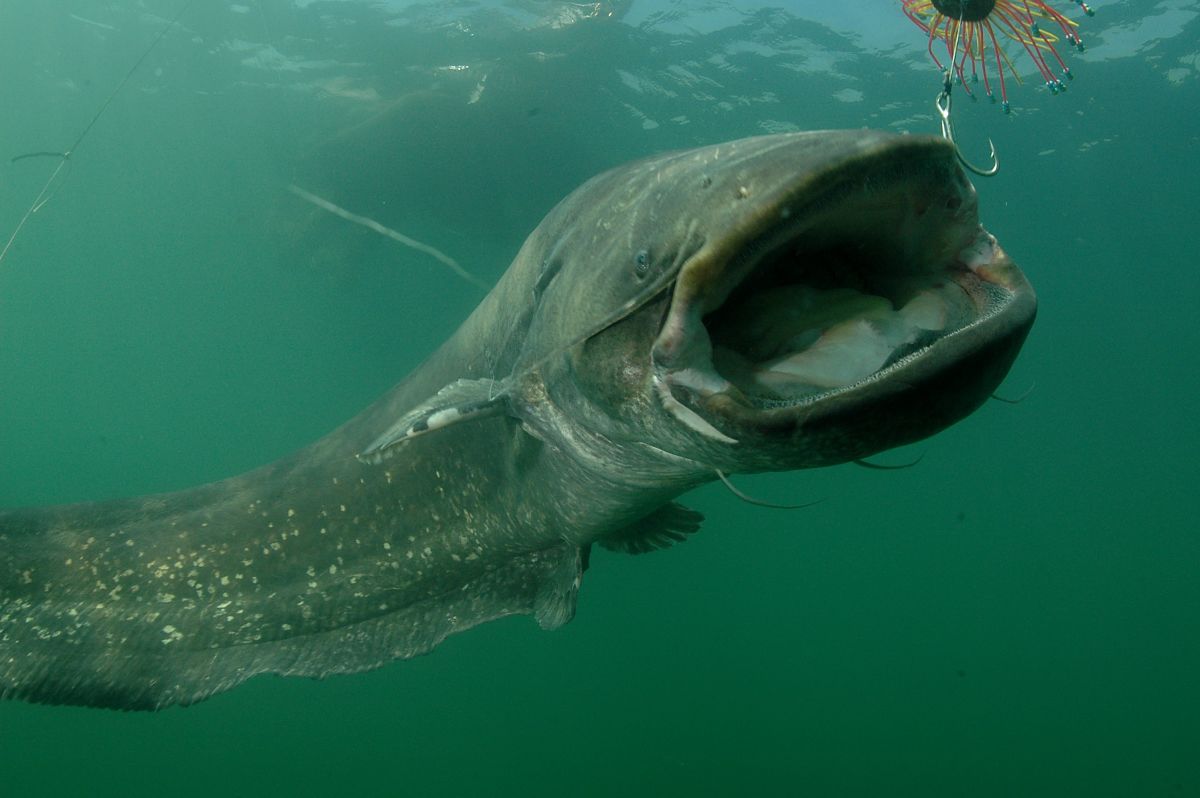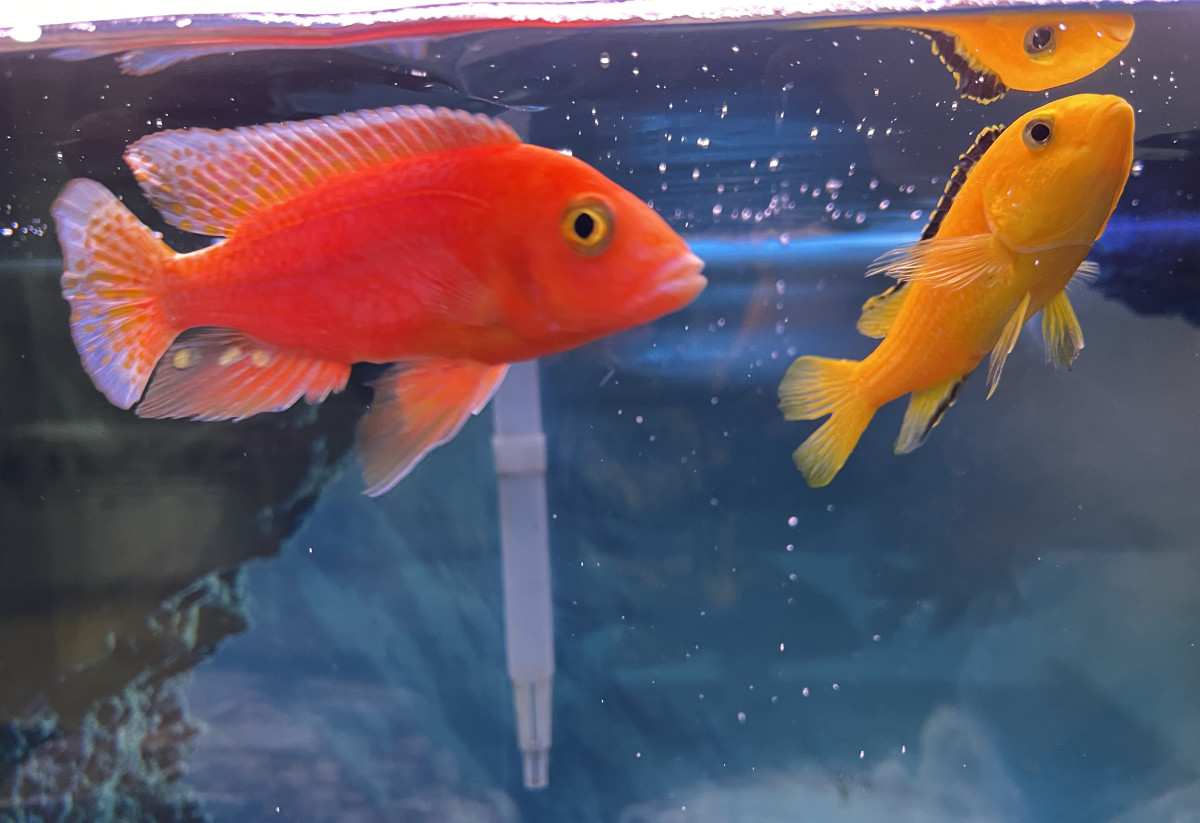Bettas for Beginners
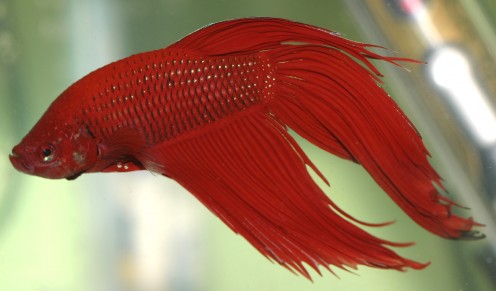
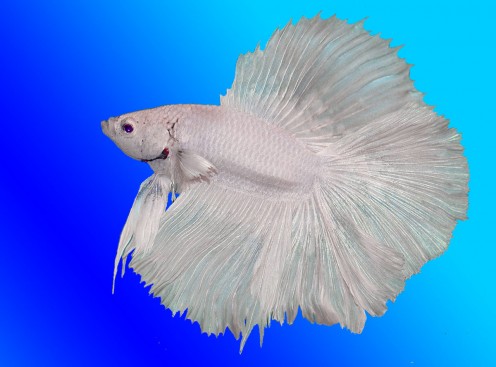
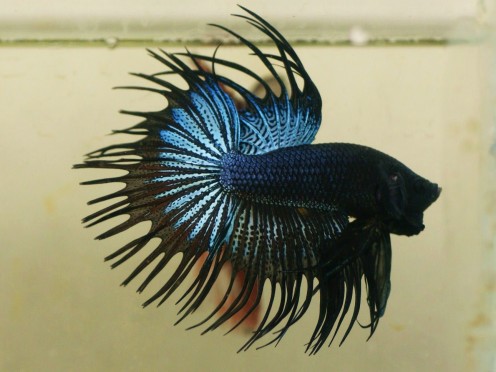
Pick-A-Fish
There are several types of Betta and their names are based on how they look. But the three most popular fin types are the veil, crown, and halfmoon. Beyond fin shape are the colors and their combinations.
Fins: When people think of Bettas they normally think of veiltails. Veiltails have long, flowing fins and most commonly come in a solid red color. Halfmoons, as their name describes, have fins that form a half circle shape when flared. Halfmoons commonly come in blue and butterfly colors. The crowntail is like the halfmoon in overall shape but the ends of the fins, instead of being smooth, are curved and ragged in appearance.
Color: Bettas can come in almost any color imaginable but they all originate with basic colors. As mentioned before, red and blue are the most dominant colors of Bettas but there is another called cellophane. Cellophane Bettas appear yellow in color but can be completely clear. Some lack all pigment making them albino, but those aren’t as common. Depending on what color a breeder wants, it’s just like using the primary colors of an artist’s palatte to create the ideal hue.
Patters: Solid colors are the easiest to breed in Bettas but many combinations of color are possible. Butterflies, bicolors, and marbles are the most common patterns. As it suggests, bicolor Bettas have two colors; one on the body and one for the fins. Marble Bettas are basically cellophane with blotches of any color over the body and tail. Marbles are the Pintos of the Betta world. Butterfly Bettas have one color with white tips on the fins. The butterfly pattern is very popular on halfmoon Bettas.
Confidence: Male Bettas, aka fighting fish, are known for their aggression. It is the mark of a mentally healthy individual. Therefore, it is best to choose two or more Bettas that you are interested in and place them side by side, obviously not in the same container, to see if they flare. A Betta that does not flare at another live male may be shy or ill. Skittish Bettas can get stressed too easily, which will lead to death. You want a confident fish in your life!
Pick-A-Bowl
The Betta is a tropical fish with origins in the rice patty fields of southeast Asia. Therefore, they and their ancestors were used to shallow living spaces. Because of this, there is much debate over the minimal size a tank can be to house one. Tank size can be determined on how often you feel up to cleaning a tank. For example, if you get a half gallon tank, you should clean it weekly in order to keep hazardous chemicals from building up in the water.
A place to hide: Every aquarium wouldn’t be complete without some decorations. But fake plants are discouraged because they often get caught on the delicate fins of bettas, tearing them and possibly tiring the fish out trying to get unstuck. Either have real or no plants in the tank. Though they are supposed to be territorial, even the toughest fish need a break once in a while and need a place to feel safe. Logs are a favorite among Bettas as a place to sleep and hide. Fish with nowhere to feel safe tend to suffer from stress. Also, tops for your tank will keep your Betta from jumping out of the water and keeps other animals out!
Water conditions: Because Bettas are tropical fish, they cannot be kept at room temperature like Goldfish. Unless your house is always warm, you will need to invest in a water heater. There are many types but submersibles are most common because they can be placed directly into the water. Bettas need to be kept in an environment of 72-80 degrees Fahrenheit. If you aren’t sure how warm the water is, most aquarium thermometers come with the ideal tropical temperatures highlighted. First-time Betta owners sometimes think that instead of buying a heater that they can just sit their Betta in an area with direct sunlight. This is not only ineffective but potentially dangerous. You cannot control the intensity of the light and it may heat the water too much. Also, sunlight allows algae to build up faster. It’s best to have your Betta in a room with natural, indirect light with a heater.
Conditioning your water is the best preventative medicine for your Betta. Always give your Betta bottled spring water or chemically treated tap water. Untreated water contains chlorine and other chemicals that can harm your fish. Some pet stores add aquarium salts to their Bettas before placing them up for sale to keep the water balanced, but there are dozens of commercial conditioners available that do the same things.
Depending on the size of your tank, you may consider getting a filter. Many first time fish owners do not know that there are different types of filters. Many think of bubbles when they think of a filter. These are oxygenation filters that keep the water from become stagnant. For fish like Goldfish, this is required because they must have a current and are not very good at getting oxygen through their gills. The bubbles add lots of oxygen to the water for them. But Bettas can not only get oxygen from the water but also can breathe air because of their primitive lungs. Therefore, they only need a filter that removes waste from the water. Bettas don’t create nearly as much waste as Goldfish so most owners don’t even get a filter and just hand wash their tanks as needed. If you do get a filter, make sure the current it creates isn’t too strong; if a Betta has to constantly swim to stay in one spot instead of simply hover, it will tire quickly, become stressed, an possibly get sick.
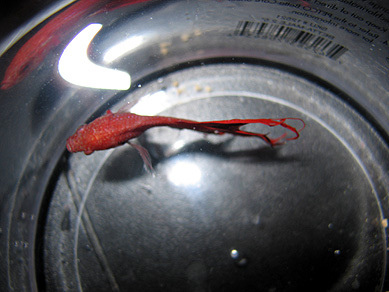
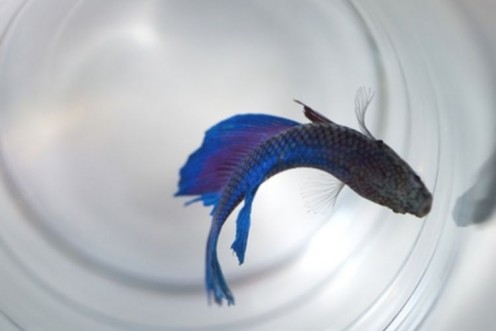
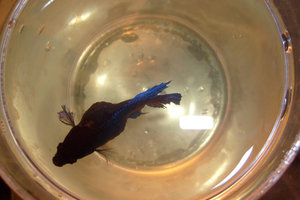
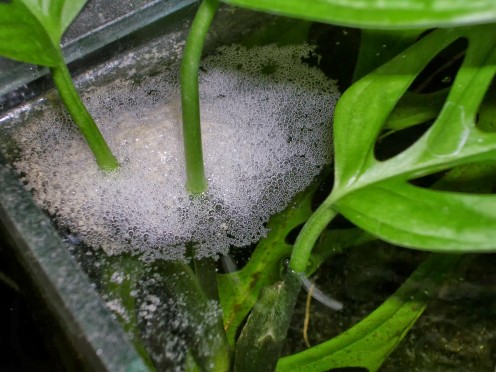
Daily Care
BNow that the tank is ready for your scaly friend, it’s up to you make sure they stay healthy. Bettas can live for several years.
Feeding: Most betta keepers feed either live or dried foods. There are feed pellets specially made for Betta fish needs. Bloodworms are the most popular live food but you must take care when feeding Bettas live food as they will keep trying to eat moving food even once full. When you feed Bettas, only give them enough food to equal the mass of their eyes. Betta stomachs are the same size as their eyes, so feeding them more than that will go to waste and only make the water murky after it dissolves. And because they have such small stomachs it is common practice to not feed Bettas for at least one day out of the week to allow their digestive system to clean out. Otherwise, feed your Betta one to two times daily.
Every once in a while owners should check the weight of their Betta. A Betta that is over or underweight is dangerous. A Betta in proper weight will have a gentle taper from the back of the head to the tip of the tale.
Happiness: The number one way to tell if your Betta is happy is the presence of a bubble nest. When Betta males are ready to breed, or are in high spirits, they will blow hundreds of tiny bubbles that stick and float together on the water’s surface. Bubble nests are the way Bettas breed. But just because your Betta made a nest does not mean you should add a female. Females who are not ready to breed may be attacked by frustrated males.
It’s good practice to stimulate your Betta to flare; it’s like going for a jog. A Betta that flares perfectly will have its fins standing on end with the individual spines spread out to make it look much bigger from the sides. It will also flare its gills to make it look bigger from the front. Each Betta has their own reasons to flare. Some only flare at mirror reflections while others flare at passing humans or figurines that are sitting nearby. But just like jogging, a Betta should not be flaring all day, every day. Either stop doing what makes them flare or have somewhere they can hide when they get tired.
Illness
Even with all the care and attention you may give to your Betta, sometimes life happens and they get sick. The most common signs of an ill Betta are lethargy, appetite loss, discoloration, self-mutilation (like torn fins), and staying at the top or bottom of the tank.
There are many ways to diagnose and treat illness in your Betta but the list is too numerous to state here. However, there are plenty of helpful resources on the internet.
Fun Facts
Even though Bettas are known for their aggression, most males get along just fine with other fish as long as they don't have luxorious tales. Fish like Cories, Minnows, and Tetras are safe to add to a Betta tank. Sharks are also safe, except for their habit of biting off the fins of other fish.
Female Bettas' fins aren’t long and look like Betta fry.
Depending on the purity of its pedigree, a Betta's color can change over time. It's not unusual to find a blue Betta with red ventral fins.
White tips means that the fin is regrowing but it's hard to tell on butterfly patterns.
King is the largest breed of Betta, but they have some of the shortest fins. Normal Bettas' bodies grow up to 3 inches long, but King's grow up to 5!
Bettas don’t like eating off the ground so don’t feed too much as they won't look for food at the bottom of their tank later.

